Table of Contents

Listen to the interview with Melanie Meehan (transcript):
Sponsored by Pear Deck and Spinndle
This page contains Amazon Affiliate and Bookshop.org links. When you make a purchase through these links, Cult of Pedagogy gets a small percentage of the sale at no extra cost to you. What’s the difference between Amazon and Bookshop.org?
If we want our students to learn as much as they can, ideally they should be presented with learning tasks that are right at their level, or slightly above, so they have to reach a little bit, but they can get there. Making this happen as a teacher—what we refer to as differentiating instruction—is really challenging, because within any group of students you’ll find a huge range of abilities, background knowledge, and interests. To do differentiation well, you need lots and lots of tools. A few we’ve offered here are playlists, self-paced learning, and Universal Design for Learning.
Today we have one more called backward chaining. It’s an approach that allows a student who struggles with a task to skip some of the early steps in order to experience the later ones. The strategy was shared with us by Melanie Meehan, a Connecticut-based elementary writing and social studies coordinator who has written three books about teaching writing and contributes to the phenomenal collaborative blog Two Writing Teachers.
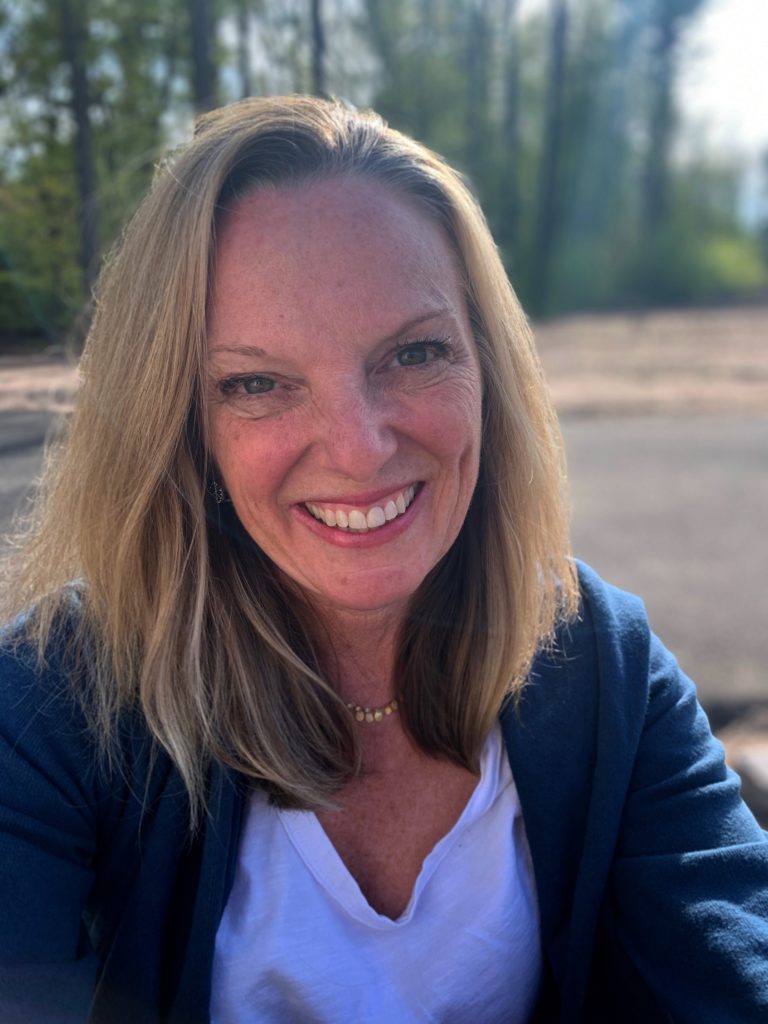
Although Meehan uses backward chaining to help students with writing, it’s a strategy that can be used in many, many subject areas, so even if you don’t teach writing, stick around, because you will likely find some ideas here for how you can use it in your own classroom.
What is Backward Chaining?
Backward chaining is a specific kind of scaffolding that has the student begin a task closer to the end, rather than starting it from the beginning. Where the starting point is depends on the student’s particular needs. “There’s no telling where the gum in the straw might be for somebody getting stuck doing something,” Meehan explains. So finding it will require assessment and experimentation.
For example, if you are teaching a child how to brush their teeth, and that child doesn’t quite have the fine motor skills to put the toothpaste on the brush, you’d do that step for them and have them start with the brushing itself. Eventually, as they build confidence with brushing, you’d have them move backward and add on the skill of toothpaste application.
While this strategy is frequently used in situations like the above—teaching life skills to young children or students with disabilities—it can be applied to any educational task where a student needs extra scaffolding or support.
“It’s another way to give kids access,” Meehan says.
The reasons a student may need a strategy like backward chaining can vary. It may be that their current skill or ability level would hold them up at an early stage of the task, or it might be that executive functioning is slowing them down. “So many of the kids that you might be envisioning at this point are kids who don’t always see things to completion,” Meehan explains. “To give kids a sense of completing a task is kind of a big deal.”

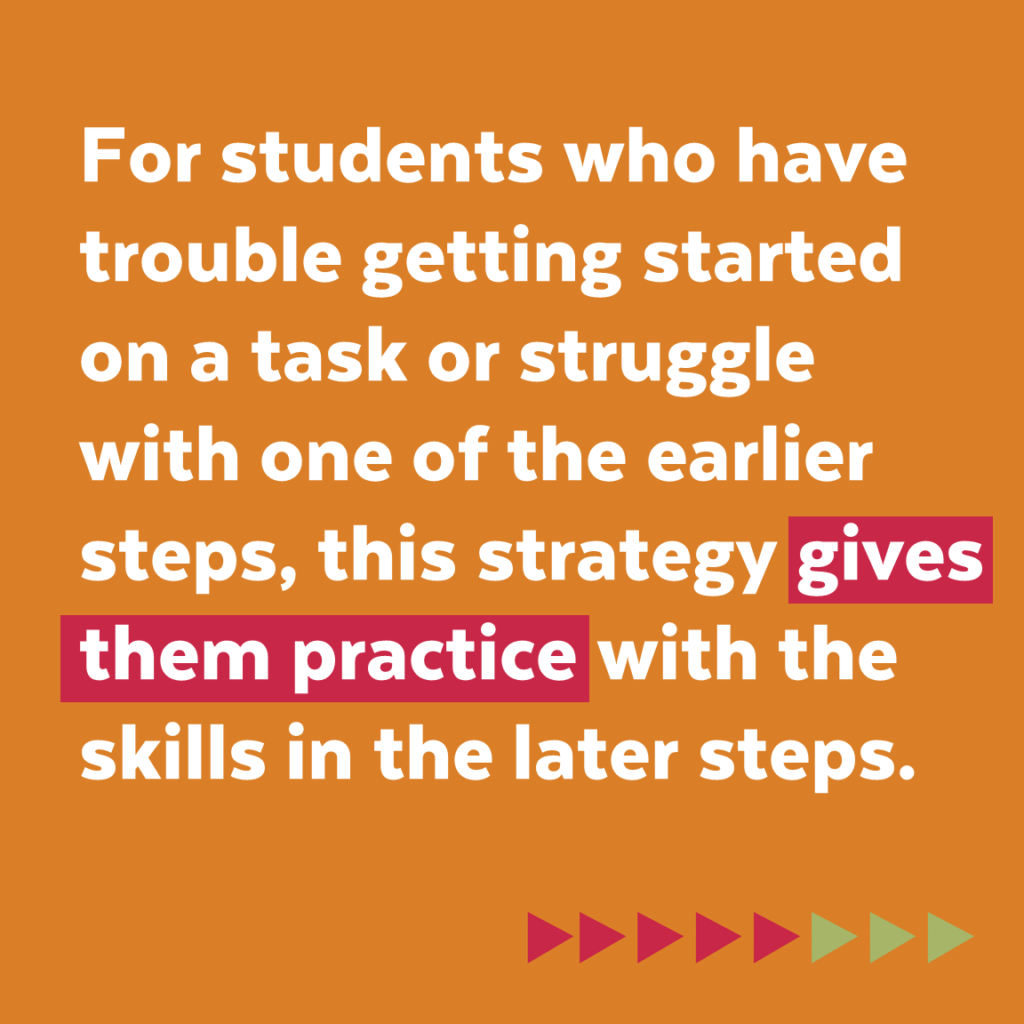
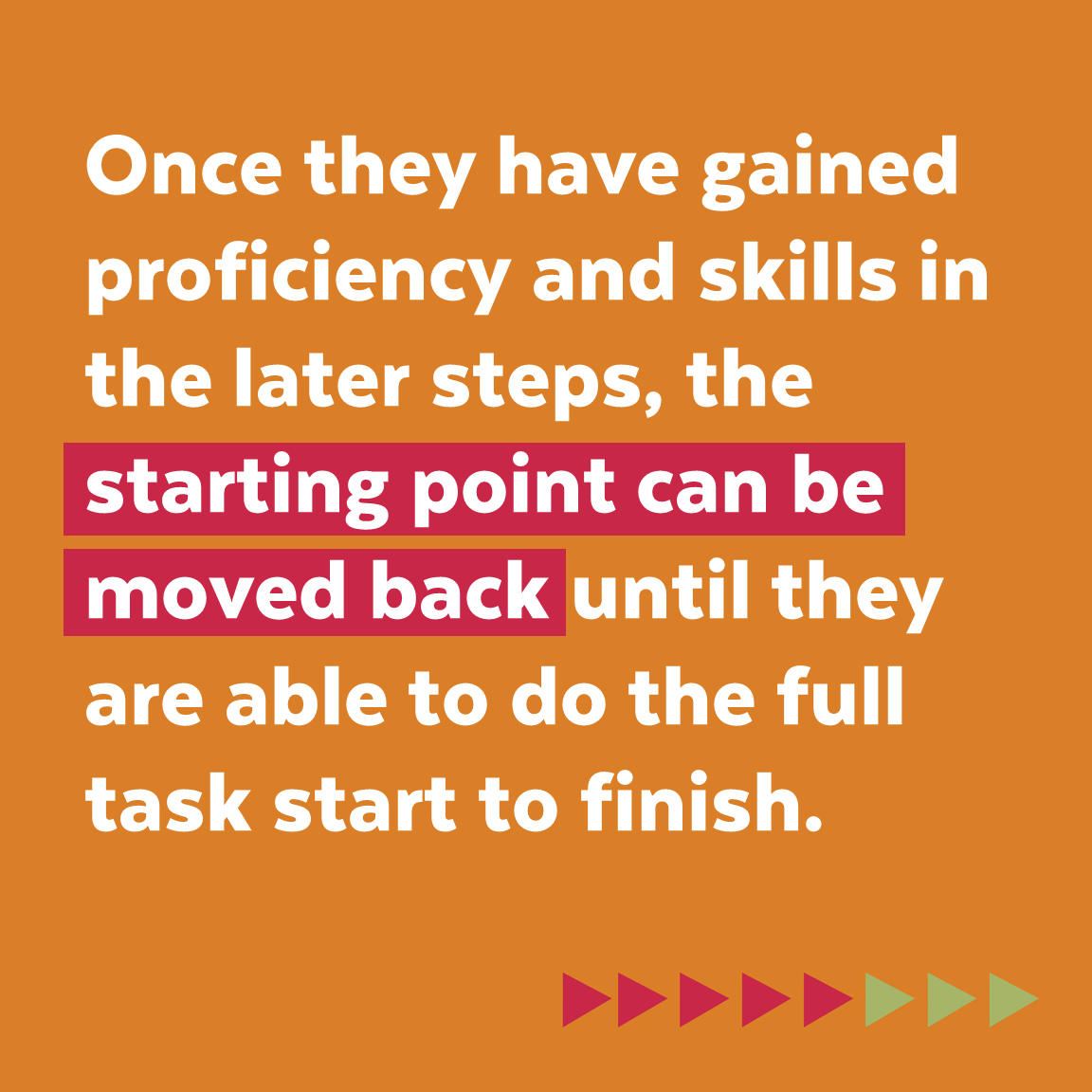
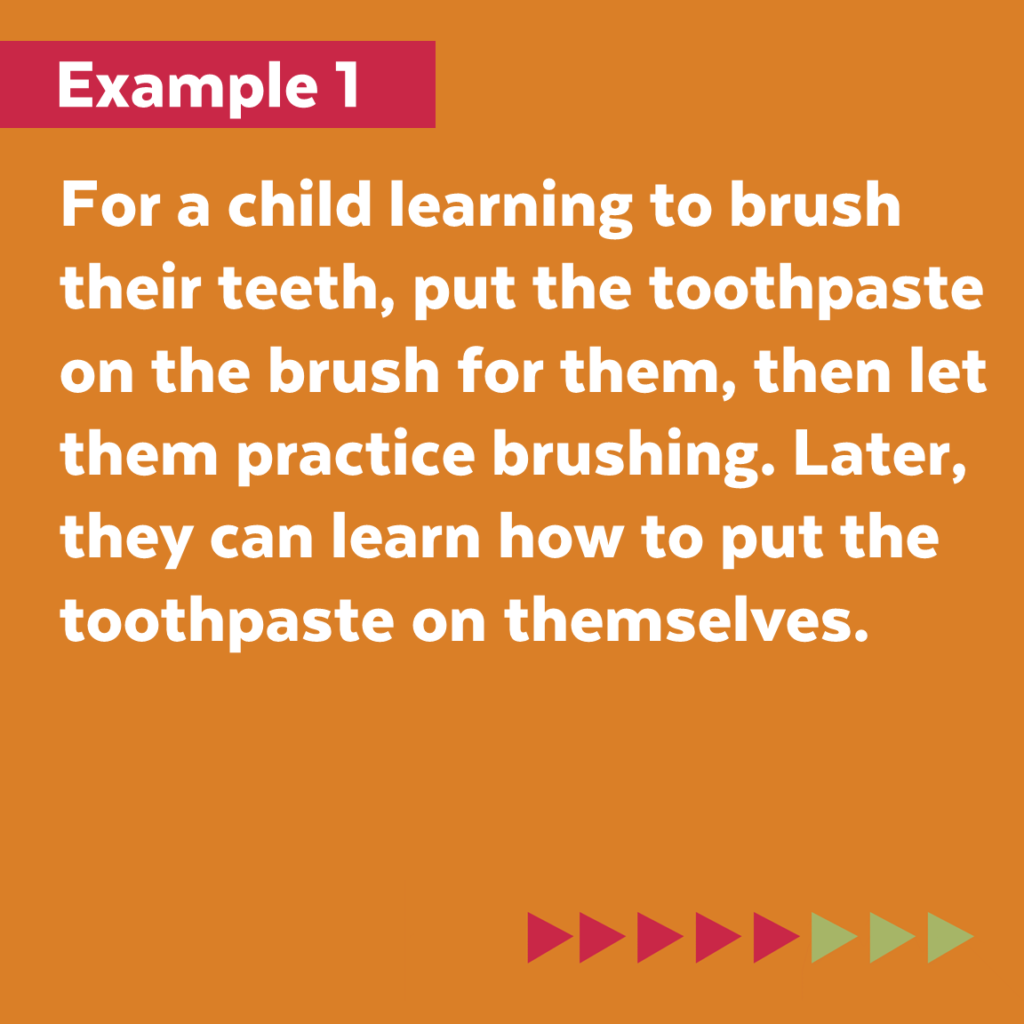
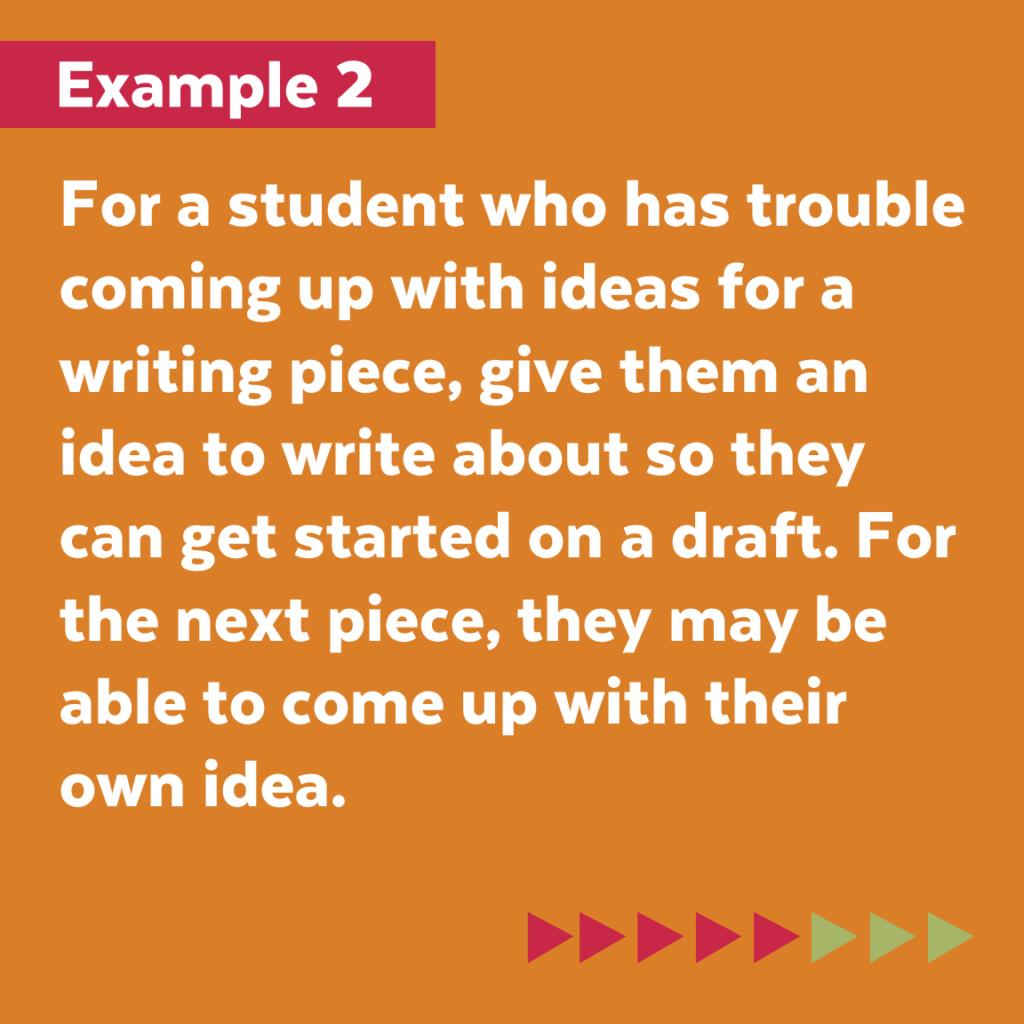
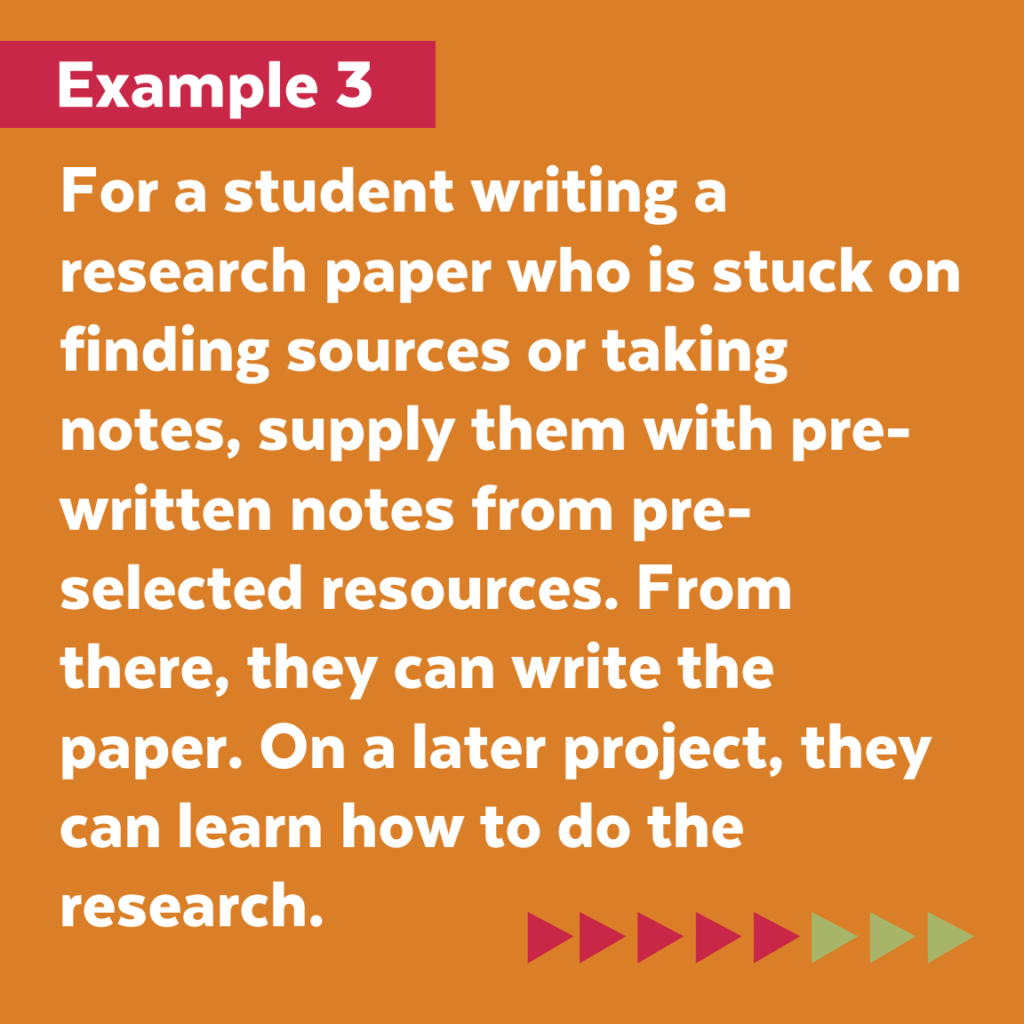
Examples of Backward Chaining
- Writing: If a student struggles to come up with an idea for a narrative piece, supply them with an idea (even give them three pictures of a basic sequence of events) and have them write the story of those pictures. Later, they may be ready to try again with their own idea.
- Research: If a student needs to create a presentation or write a paper based on research, and they don’t yet have the skills to find resources or take notes, you could supply them with pre-selected resources and pre-written notes on the topic, then just have them write the summary of the research. In the future, they can work on the research or notes part of the process until they get to the point of being able to do the whole thing from beginning to end.
- Math: For complex problems, have the first few steps done and have the student take over from there until they are ready to work backwards with fewer steps done for them.
- Cooking: Many people may be familiar with meal kit services like HelloFresh or Blue Apron, which supply pre-measured ingredients for specific menus and tell you exactly how to cook them, which puts you a few steps into the process of making the meal.
Tips for Using Backward Chaining in Your Classroom
Start with a task analysis. If you know you have an assignment coming up that some students typically struggle with, think through all the steps involved from start to finish. Doing this will give you options for different entry points for students.
Include the student in the process. Meehan recommends that teachers be transparent with students about the options available and let them choose where to start. For the research example above, she’ll tell them, “If you feel like you’re ready to have a text set that you can research yourself and take notes on yourself, I have those. If you feel like you need the notes, I’ll give you the notes so that you can get straight to writing. And if you’re like, no, I want to do the whole thing myself, I want to decide on my topic and find my resources and get myself set up, you can do that. It’s kind of like where in the process do you feel like you’re ready to start?”
Gradually move the starting point back. Backward chaining is not a permanent solution; the idea is that the student will eventually be able to move back to where they can do the whole task from the beginning. “Scaffolds by definition should be temporary and there should be a plan to take them away,” Meehan says. “So I am intentionally and purposefully doing work for kids, but with the idea that they are going to build their confidence, they are going to build their competence, they’re going to build their curiosity around the whole process, and they’re going to become more willing to go backward in the process to an earlier step.”
LEARN MORE
You can find more from Meehan on her website, melaniemeehan.com. She goes more in-depth about the backward chaining strategy and lots of others in her 2019 book, Every Child Can Write (Amazon | Bookshop.org).
Join our mailing list and get weekly tips, tools, and inspiration that will make your teaching more effective and fun. You’ll get access to our members-only library of free downloads, including 20 Ways to Cut Your Grading Time in Half, the e-booklet that has helped thousands of teachers save time on grading. Over 50,000 teachers have already joined—come on in.

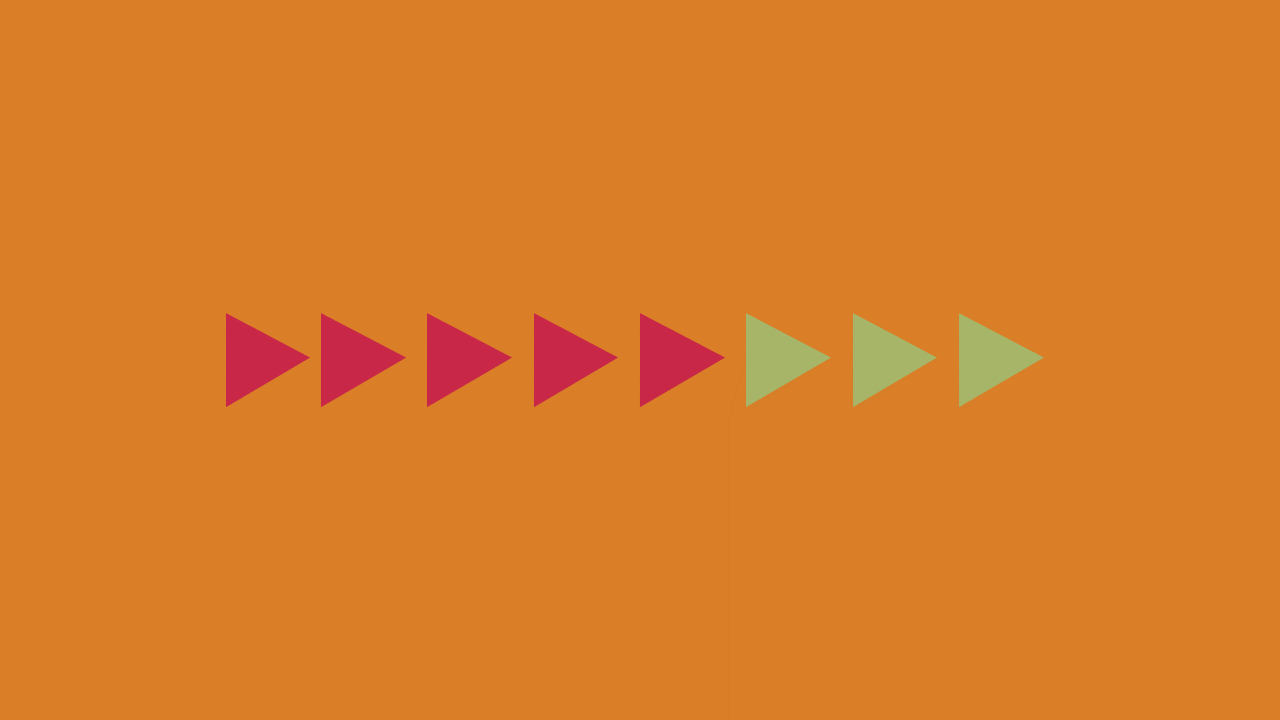




More Stories
Uvalde Border Patrol agent hailed as hero collects $17,000 in personal fundraiser
The Power Moves to Retain Teachers Amid the Pandemic
A Few of My Favorite Healthy Meals and Where to Buy Them